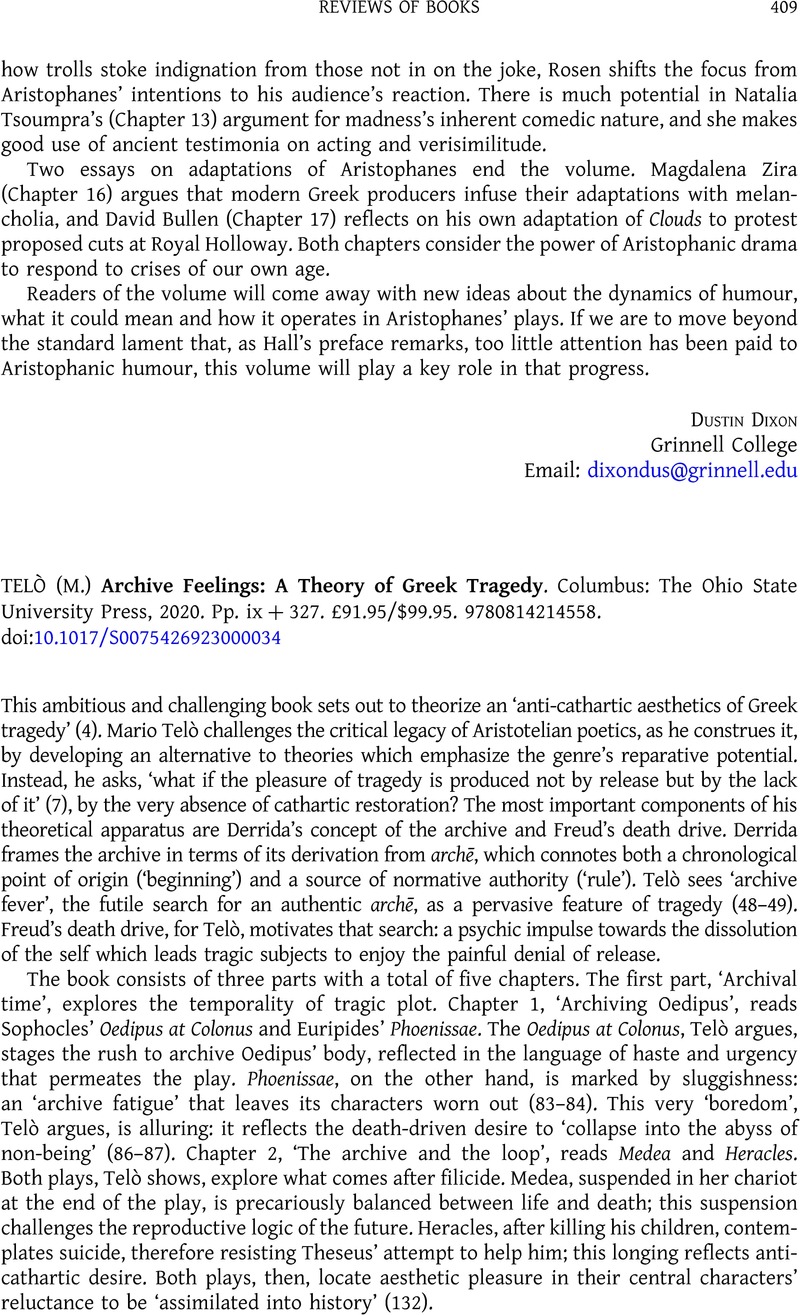No CrossRef data available.
Article contents
(M.) TELÒ Archive Feelings: A Theory of Greek Tragedy. Columbus: The Ohio State University Press, 2020. Pp. ix + 327. £91.95/$99.95. 9780814214558.
Review products
(M.) TELÒ Archive Feelings: A Theory of Greek Tragedy. Columbus: The Ohio State University Press, 2020. Pp. ix + 327. £91.95/$99.95. 9780814214558.
Part of:
Literature
Published online by Cambridge University Press: 25 April 2023
Abstract
An abstract is not available for this content so a preview has been provided. Please use the Get access link above for information on how to access this content.

- Type
- Reviews of Books
- Information
- Copyright
- © The Author(s), 2023. Published by Cambridge University Press on behalf of the Society for the Promotion of Hellenic Studies


